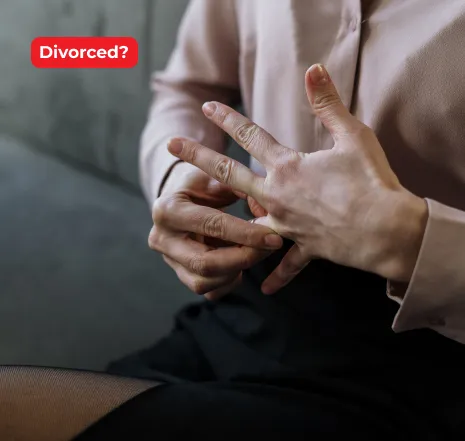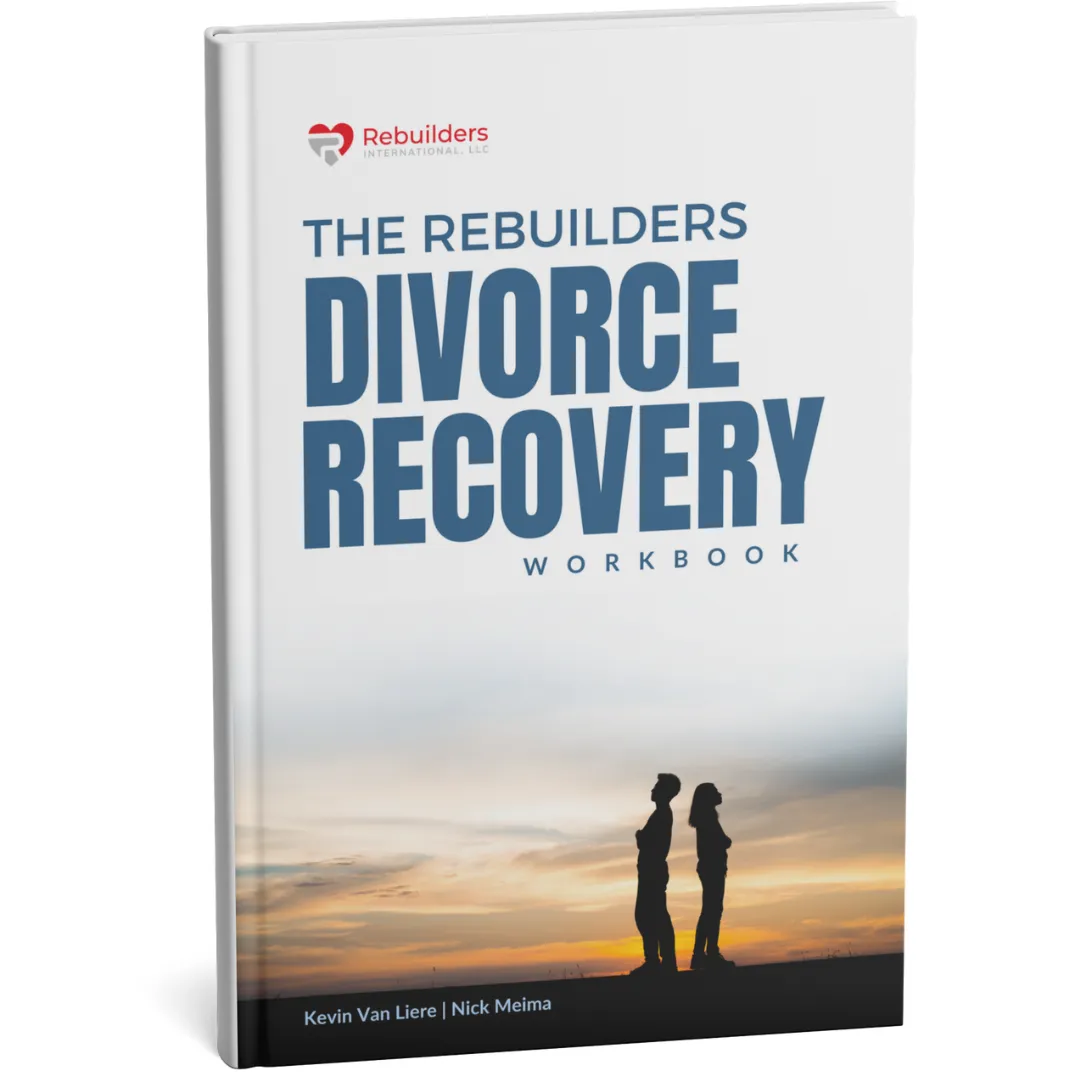FEATURED STORIES...
(Click on the images to open in a new tab)

Divorce 101: Understanding the Legal Process and Protecting Your Rights
Divorce 101: Understanding the Legal Process and Protecting Your Rights
Going through a divorce is never easy. Emotions run high, and finding your way through the complex legal process can feel overwhelming. That's why it's crucial to have a thorough understanding of the legal aspects and know how to protect your rights during this challenging time.
In this comprehensive guide, we'll walk you through the divorce process step by step. From filing the initial paperwork to division of assets and custody arrangements, we'll cover all the essential aspects you need to know. Whether you're contemplating a divorce or have already started the process, this article will provide you with the knowledge and insights to navigate it successfully.
By shedding light on common misconceptions and providing accurate information, our aim is to empower you to make informed decisions about your future. We'll also provide valuable tips on how to protect your rights and ensure a fair outcome.
Divorce is a significant life event, but with the right understanding and guidance, you can navigate the legal process with confidence and safeguard your rights. Let's delve into the world of divorce together and emerge stronger on the other side.
Types of divorce and their implications
When it comes to divorce, it's essential to understand the different types and their implications. The most common types of divorce include fault-based divorce and no-fault divorce. In a fault-based divorce, one party must prove that the other spouse's actions caused the breakdown of the marriage. This can include adultery, abandonment, or cruelty. On the other hand, a no-fault divorce does not require either party to prove fault. Instead, it is based on the irretrievable breakdown of the marriage.
It's important to understand the implications of each type of divorce. In a fault-based divorce, the court may consider the behavior of the spouse at fault when making decisions about alimony, child custody, and property division. In a no-fault divorce, the focus is more on dividing assets and determining child custody based on the best interests of the child.
Understanding the legal grounds for divorce
Before proceeding with a divorce, it's essential to have a clear understanding of the legal grounds for divorce. Each jurisdiction may have different requirements, but some common legal grounds include adultery, cruelty, abandonment, imprisonment, and irreconcilable differences. It's crucial to consult with a family law attorney to understand the specific legal grounds in your jurisdiction.
It's important to note that proving fault may have an impact on the divorce process and the outcome. In some cases, fault may affect the division of assets, alimony, and child custody. However, in a no-fault divorce, fault is generally not considered when making these decisions, and the focus is on the best interests of the parties involved.
Steps involved in the divorce process
The divorce process can be broken down into several key steps. Understanding each step can help you navigate the process more effectively. The first step is filing a petition with the court, which initiates the divorce process. After the petition is filed, the other party must be served with the divorce papers, which can be done through personal service or certified mail.
Once the divorce is initiated, the next step is discovery, where both parties gather information and exchange relevant documents. This includes financial records, property valuations, and any other evidence that may be relevant to the divorce proceedings. During this stage, it's crucial to work closely with your attorney to ensure all necessary information is obtained.
After discovery, the next step is negotiation and settlement. This is when both parties, along with their attorneys, attempt to reach an agreement on issues such as property division, alimony, and child custody. If a settlement is reached, it is presented to the court for approval. If no settlement is reached, the case may proceed to mediation or trial, where a judge will make the final decisions.
How to save money in the legal process
Divorce can be expensive, but there are ways to save money during the legal process. The biggest most people make is that they go straight to a lawyer. This should be a last resort. Very few lawyers are out to save their clients money. The more conflict there is and the more money you have at stake the more they are incentivized to keep the divorce process going. Here are some additional options:
Unbundled services
Mediation
Do it yourself (using an online service)
In most states the actual cost to file is less than $500. The average divorce costs anywhere from $7,000 to $15,000. Some can reach over $100,000.
So, the best strategy is to stay away from a lawyer as much as possible.
Protecting your rights during divorce proceedings
Protecting your rights during divorce proceedings is crucial to ensure a fair outcome. One of the first steps is to visit with a qualified attorney who specializes in family law. You can ask a lot of questions and get some answers for free. If you do need an attorney, then they can help guide you through the process, explain your rights, and advocate on your behalf.
It's also important to gather evidence to support your case. This can include financial records, communication logs, and any other relevant documents that demonstrate your contributions to the marriage, parenting abilities, or any other factors that may impact the decisions made during the divorce process.
Additionally, it's crucial to maintain open lines of communication with your support team and be actively involved in the process. By staying informed and engaged, you can better protect your rights and ensure that your interests are represented effectively.
Child custody and support considerations
Child custody and support are often the most emotionally charged aspects of a divorce. It's important to approach these issues with the best interests of the child in mind. When determining child custody, the court will consider factors such as the child's age, the parents' ability to provide a stable environment, and the child's relationship with each parent.
Child support calculations vary by jurisdiction but typically take into account factors such as each parent's income, the child's needs, and the amount of time each parent spends with the child. It's crucial to work closely with your attorney to ensure that child custody and support arrangements are fair and in the best interests of the child.
Division of assets and property during divorce
The division of assets and property during a divorce can be complex and contentious. It's important to have a clear understanding of what is considered marital property and how it will be divided. Marital property typically includes assets acquired during the marriage, such as real estate, vehicles, bank accounts, investments, and retirement accounts.
In some cases, prenuptial agreements may dictate how assets are divided. If there is no prenuptial agreement, the court will consider factors such as each party's contributions to the marriage, the length of the marriage, and the financial needs of each party when making decisions about property division.
It's crucial to work closely with your attorney and consider consulting with financial professionals to ensure that the division of assets is fair and in line with your future financial goals.
Common challenges and how to overcome them
Divorce can present many challenges, both emotional and practical. One common challenge is managing emotions throughout the process. It's important to seek emotional support from friends, family, or a therapist to help navigate the ups and downs of divorce.
Another challenge is co-parenting after divorce. It's crucial to establish clear communication and boundaries with your ex-spouse to ensure that the needs of your children are met. Co-parenting classes or mediation can provide valuable tools and strategies for successful co-parenting.
Financial challenges are also common during divorce. It's important to create a budget and seek financial advice to ensure that you can support yourself and your children during and after the divorce process.
Conclusion: How best to navigate the divorce process
Divorce is undoubtedly a challenging and life-altering event. However, with the right understanding and guidance, you can navigate the legal process and protect your rights. By seeking professional advice, being proactive in gathering information, and approaching the process with a focus on fairness and the best interests of all parties involved, you can emerge from divorce stronger and ready to start a new chapter in your life.
Remember, divorce is not the end; it's an opportunity for a fresh start. Take the time to care for yourself, seek support when needed, and keep your focus on building a positive future. You have the strength and resilience to navigate this journey and create a life that is fulfilling and meaningful.
Divorce Support & Recovery
Welcome to the #1 most comprehensive divorce recovery program in the world.

Does the Rebuilders
System Really Work?
Below you’ll see that the Rebuilders International system really works, why it is unique, and what we do. We will let this information stand for itself! And yes, of course results will vary but with only a few hours a week you can have a life changing experience.
The Rebuilders Background:
40 Years Of Changing People's Lives.
Meet Dr. Bruce Fisher
The founder of the Rebuilders program was Dr. Bruce Fisher (1931-1998). He was born in Iowa but spent most of his adult life in Boulder, Colorado. He was a popular divorce therapist, author, teach and a Clinical Member of the American Association for Marriage and Family Therapy. As he worked with clients dealing with divorce he realized that traditional therapy didn’t work efficiently.
He began working with his clients in groups and eventually found that there are 19 “steps” that people must work through to effectively “Rebuild” their lives. From this work he wrote the book “Rebuilding When Your Relationship Ends.” We still use this book as a reference in our classes. Since he wrote the book over 30 years ago we have learned a lot and the program has evolved considerably. Now we find that there are more “steps” and that there are some elements that Dr. Fisher wasn’t aware of or misunderstood. However, he still created a powerful foundation for the program that we run today.

See The Data...
"I’m so thankful to have had the opportunity to have taken this journey with you and the class. It’s been very mind blowing and a real eye opener. It changed my life."
Mike
How our program works...

Head
Your thinking, mindset, beliefs, and values all influence how you respond to the traumatic experience of divorce. We show you how to step outside of the rumination about the past. Learn to step outside of the normal traps that keep people stuck thinking about the past.

Heart
Many people suppress, depress, or repress their feelings. Divorce brings so many “difficult” feelings. We give you tools to work through them, use them, and feel the “good” feelings again -like HAPPINESS, JOY, AND LOVE.

Identity
In marriages people “lose” themselves. When the marriage ends they don’t know who they are as a single person. We help you connect with yourself so that you can be comfortable being alone in your own skin.
The Program Works Regardless of Your Situation!
Considering Divorce?

Learn what you can do find the best path forward
It is a very difficult time in your life when you are facing the possibility of divorce. We offer a wide variety of tools, information and personal coaching to help you.
In the Divorce Process?

Divorce Resources – Support for All Stages of Divorce
When you are dealing with divorce there is a lot going on. There are legal issues, financial issues, emotional issues, parenting issues and more. When faced with all of these pressures we see that people that pay attention to the emotional effect of divorce are better able to navigate everything else much better.
Divorced?

The Papers are signed...
Whether you are recently divorced or it has been years, the wounds from divorce are real. Time does not heal all wounds, it just scabs over them. So if you are ready to learn more about what you can do to HEAL then click below.
Get guidance on how to best recover during this very challenging time in your life.
PAGE HEADLINE (ALL CAPS, BOLD) - PRIMARY COLORS (USE FIRST) & LINK COLOR
RB Logo Red #EC1C24
RB Grey #8D918B
RB Blue #1E3888
RB Dark Blue #172B68
RB Yellow #F5E663
RB Red #B51730
SUB-PAGE HEADLINE (32M, 50D) (ALL CAPS, BOLD) - PRIMARY COLORS (USE FIRST) & LINK COLOR
Sub-Title (22M, 35D) (BOLD) - Primary Colors (Underline) & LINK COLOR
Shades of Grey on RB Grey
RB Grey 1 (F2F3F2) - RB Grey 1 BOLD (F2F3F2)
RB Grey 2 (D8DAD8) - RB Grey 1 BOLD (D8DAD8)
RB Grey 3 (BFC1BE) - RB Grey 1 BOLD (BFC1BE)
RB Grey 4 (A5A8A3) - RB Grey 1 BOLD (A5A8A3)
RB Grey 5 (8B8F89) - RB Grey 1 BOLD (8B8F89)
RB Grey 6 (727670) - RB Grey 1 BOLD (727670)
RB Grey 7 (585C57) - RB Grey 1 BOLD (585C57)
RB Grey 8 (3F413E) - RB Grey 1 BOLD (3F413E)
RB Grey 9 (262725) - RB Grey 1 BOLD 262725
RB Grey 10 (0D0D0C) - RB Grey 1 BOLD 0D0D0C
Shades of Grey on White
RB Grey 1 (F2F3F2) - RB Grey 1 BOLD (F2F3F2)
RB Grey 2 (D8DAD8) - RB Grey 1 BOLD (D8DAD8)
RB Grey 3 (BFC1BE) - RB Grey 1 BOLD (BFC1BE)
RB Grey 4 (A5A8A3) - RB Grey 1 BOLD (A5A8A3)
RB Grey 5 (8B8F89) - RB Grey 1 BOLD (BFC1BE)
RB Grey 6 (727670) - RB Grey 1 BOLD (BFC1BE)
RB Grey 7 (585C57) - RB Grey 1 BOLD (BFC1BE)
RB Grey 8 (3F413E) - RB Grey 1 BOLD (BFC1BE)
RB Grey 9 (262725) - RB Grey 1 BOLD (BFC1BE)
RB Grey 10 (0D0D0C) - RB Grey 1 BOLD (BFC1BE)
Shades of Blue on RB Grey
RB Blue 1 (EAEEFA) - RB Blue 1 BOLD (EAEEFA)
RB Blue 2 (COCCF1) - RB Blue 2 BOLD (COCCF1)
RB Blue 3 (97ABE8) - RB Blue 3 BOLD (97ABE8)
RB Blue 4 (6D89DF) - RB Blue 4 BOLD (6D89DF)
RB Blue 5 (4367D6) - RB Blue 5 BOLD (4367D6)
RB Blue 6 (294DBC) - RB Blue 6 BOLD (294DBC)
RB Blue 7 (203C92) - RB Blue 7 BOLD (203C92)
RB Blue 8 (172B68) - RB Blue 8 BOLD (172B68)
RB Blue 9 (0E1A3F) - RB Blue 9 BOLD (0E1A3F)
RB Blue 10 (050915) - RB Blue 10 BOLD (050915)
Shades of Blue on White
RB Blue 1 (EAEEFA) - RB Blue 1 BOLD (EAEEFA)
RB Blue 2 (COCCF1) - RB Blue 2 BOLD (COCCF1)
RB Blue 3 (97ABE8) - RB Blue 3 BOLD (97ABE8)
RB Blue 4 (6D89DF) - RB Blue 4 BOLD (6D89DF)
RB Blue 5 (4367D6) - RB Blue 5 BOLD (4367D6)
RB Blue 6 (294DBC) - RB Blue 6 BOLD (294DBC)
RB Blue 7 (203C92) - RB Blue 7 BOLD (203C92)
RB Blue 8 (172B68) - RB Blue 8 BOLD (172B68)
RB Blue 9 (0E1A3F) - RB Blue 9 BOLD (0E1A3F)
RB Blue 10 (050915) - RB Blue 10 BOLD (050915)
Shades of Yellow on RB Grey
RB Yellow 1 (FDFBE7) - RB Yellow 1 BOLD (FDFBE7)
RB Yellow 2 (FAF3B7) - RB Yellow 2 BOLD (FAF3B7)
RB Yellow 3 (F7EC87) - RB Yellow 3 BOLD (F7EC87)
RB Yellow 4 (F4EF57) - RB Yellow 4 BOLD (F4EF57)
RB Yellow 5 (F1DC27) - RB Yellow 5 BOLD (F1DC27)
RB Yellow 6 (D8C3OE) - RB Yellow 6 BOLD (D8C3OE)
Shades of Yellow on White
RB Yellow 1 (FDFBE7) - RB Yellow 1 BOLD (FDFBE7)
RB Yellow 2 (FAF3B7) - RB Yellow 2 BOLD (FAF3B7)
RB Yellow 3 (F7EC87) - RB Yellow 3 BOLD (F7EC87)
RB Yellow 4 (F4EF57) - RB Yellow 4 BOLD (F4EF57)
RB Yellow 5 (F1DC27) - RB Yellow 5 BOLD (F1DC27)
RB Yellow 6 (D8C3OE) - RB Yellow 6 BOLD (D8C3OE)

Copyright © 2025 Rebuilders International, LLC, All rights reserved.













